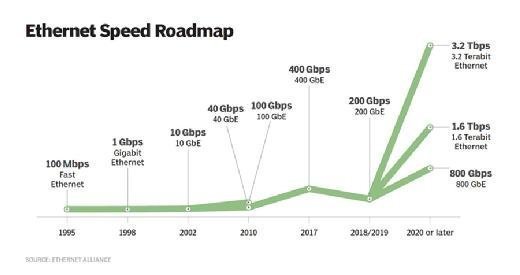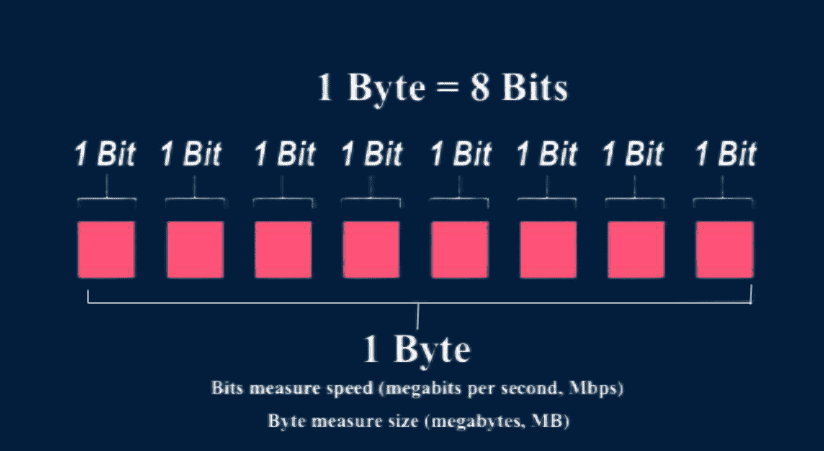Why Megabits Per Second Make A Difference for Remote Work Effectiveness
Why Megabits Per Second Make A Difference for Remote Work Effectiveness
Blog Article
How Megabits Per Second Impact Your Online Activities
The idea of megabits per second (Mbps) plays a critical function fit our on the internet experiences. As digital activities proliferate, understanding the implications of Mbps on video clip, video gaming, and streaming conferencing ends up being increasingly essential. Higher Mbps can enhance performance and reduce disturbances, while poor rates may foster irritation and ineffectiveness. Evaluating your home's specific demands in connection with these rates is vital, especially as multiple tools contend for data transfer. Yet, the nuances of how Mbps influences different online activities necessitate more exploration, particularly as our dependence on digital connection proceeds to evolve.
Understanding Megabits Per Second
When considering web speed, it's necessary to understand the principle of megabits per second (Mbps), which works as a standard measurement for information transfer rates. This metric evaluates how much information can be transmitted over a web link in one second, offering a clear understanding of performance abilities - Megabits Per Second. For context, one megabit amounts to one million bits, and Mbps is frequently made use of to express data transfer for numerous online activities
A greater Mbps shows a faster internet connection, making it possible for customers to carry out tasks such as downloading and install documents, browsing sites, and involving in on-line gaming much more effectively. Normal surfing calls for around 1-5 Mbps, while streaming high-definition video may demand 5-25 Mbps. Comprehending these demands is vital for identifying the suitable web speed needed for certain tasks.
Furthermore, the variety of gadgets linked to a network can affect general efficiency. Several individuals streaming, video gaming, or downloading concurrently can strain offered data transfer, leading to slower speeds - Megabits Per Second. Assessing personal online habits and requirements is vital in picking a net strategy that lines up with one's requirements, making sure a seamless digital experience
Streaming and Buffering Issues
Streaming high-def web content has actually ended up being a staple of modern on-line amusement, yet it is usually come with by irritating buffering problems. These interruptions can significantly interfere with the checking out experience, causing dissatisfaction and possible loss of target market engagement. Buffering occurs when the information transmitted from the streaming solution is not gotten rapidly sufficient to preserve a smooth playback, frequently as a result of inadequate internet rate determined in megabits per second (Mbps)

In addition, real-time streaming can be influenced by network congestion, which occurs when numerous tools share the exact same bandwidth. Subsequently, enhancing connection rate and making sure sufficient Mbps is important for a smooth streaming experience. As streaming services remain to progress, understanding the influence of Mbps on buffering problems remains essential for consumers looking for undisturbed home entertainment.
Online Pc Gaming Performance
The influence of web rate on online tasks prolongs past streaming, considerably affecting on the internet pc gaming performance. In affordable gaming, reduced latency and high bandwidth are vital for a seamless experience. A rapid link minimizes lag, permitting gamers to respond swiftly to in-game events, which can be the distinction in between success and loss.
Data transfer, measured in megabits per second (Mbps), plays an essential role in sustaining numerous devices and video gaming systems at the same time. Not enough bandwidth can cause went down connections or decreased video game top quality, negatively impacting gameplay. On the internet multiplayer video games call for significant data transfer, particularly during peak video gaming hours when many gamers are online.
Busy first-person shooters require higher rates to keep responsiveness, while turn-based method games may operate fairly well on lower speeds. As on-line video gaming continues to advance, with boosting graphical integrity and even more intricate multiplayer atmospheres, the need for higher Mbps will only intensify.
Video Conferencing Quality
In today's electronic landscape, video clip conferencing high quality is heavily affected by web speed, specifically in terms of transmission capacity and latency. High-grade video calls require adequate bandwidth to send audio and video clip data flawlessly. Usually, a minimum of 1.5 Mbps upload and download rates is suggested for standard interpretation video, while high-def video conferencing normally requires a minimum of 3 Mbps.
Latency, or the hold-up between sending out and receiving information, additionally plays an important role in the individual experience. Reduced latency guarantees that discussions flow naturally without unpleasant pauses or disturbances. Preferably, latency ought to be listed below 150 nanoseconds for effective interaction. Greater latency can result in resemble, lag, and disjointed communications, which can hinder partnership and involvement throughout meetings.
Additionally, numerous individuals in a video clip conference can stress available data transfer, requiring also greater rates. Network blockage, often triggered by simultaneous activities like streaming or downloading, can additionally break down video clip top quality. Hence, for companies counting on video clip conferencing for remote cooperation, understanding the relationship between megabits per second and total interaction top quality is crucial for keeping performance and boosting digital communications.
Selecting the Right Web Plan
Selecting a suitable internet plan is crucial for guaranteeing optimal efficiency in numerous on-line activities, especially in setups that require high transmission capacity, such as video clip conferencing and online video gaming. Megabits Per Second. When thinking about a net strategy, it is necessary to review both the rate and information allowance to match your particular use demands
For families with several users participating in synchronised activities, a strategy using higher megabits per second (Mbps) is suggested. Usually, a minimum of 25 Mbps is suitable for standard streaming and surfing, while strategies surpassing 100 Mbps are preferable for even more intensive jobs. Furthermore, consider the nature of your online tasks; video conferencing requires at the very least 1.5 Mbps submit rate, while on the internet gaming might need a reduced latency but regular connection.
It is additionally important to assess your information cap. Unlimited information plans can stop Recommended Reading throttling and disturbances, especially if hefty usage is expected. Lastly, research study company in your location, as availability and prices can vary. By attentively choosing a net plan tailored to your needs, you can enhance your on the internet experience, making certain smooth, continuous accessibility to your favored tasks.
Conclusion
In final thought, the significance of megabits per second (Mbps) in shaping on-line activities can not be overemphasized. An extensive understanding of individual or family Mbps requirements is essential for choosing an appropriate web plan that effectively supports varied online activities and individual demands.

Commonly, a minimum of try this site 25 Mbps is ideal for conventional streaming and browsing, while plans going beyond 100 Mbps are better for even more intensive jobs. Furthermore, think about try here the nature of your online activities; video clip conferencing needs at least 1.5 Mbps upload rate, while on-line video gaming may require a lower latency but consistent link.
Report this page